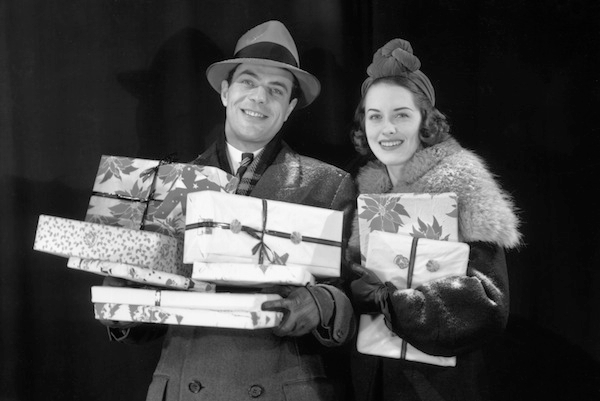In a now famous 1993 paper the economist Joel Waldfogel attempted to calculate the economic deadweight-loss caused by giving Christmas presents. His argument was that money spent by a gift-giver on a present would usually have been better spent by the recipient, since the recipient would have a better idea of his own needs and preferences than the person choosing the present.
Waldfogel’s most generous estimate rated the ‘efficiency’ of a Christmas present no higher than 90 per cent — so the typical gift was about 90 per cent as valuable as if you had given someone an equivalent amount in cash and allowed him to spend it on himself. He calculated that every year in the United States alone billions of dollars of value were squandered through the exchange of presents.
This is of course a rather narrow and uncharitable view. It neglects symbolic value: presents convey affection through a deliberately sacrificial act of generosity. It has been suggested that the reason jewellery and flowers are so valued by women when given to them by men is precisely because men aren’t interested in flowers or jewellery. Hence when you give flowers to your wife, you have spent money on something which does nothing for you but which makes her deliriously happy: it is unambiguously a present. By contrast, if you buy your wife a quad-bike or a radio-controlled helicopter for Christmas, the fact that you yourself may benefit from the purchase raises the suspicion of self-interest. Lingerie perhaps belongs in this more ambiguous category, as does a vacuum cleaner or, worst of all, an ironing board.
There are other psychological factors at work. The cost of an item we buy for ourselves lies not only in the financial outlay but also in the emotional cost. Spending £50 on your own bottle of Chanel No. 5 may arouse feelings of guilt and raise worries about that unpaid gas bill. Receiving it as a present solves this problem — one reason, perhaps, why high-guilt items such as chocolates and flowers feature so often as presents.
So Waldfogel was wrong — but his argument may need reviving. One absurdity of gift-giving seems increasingly problematic. Partly for reasons of tradition, presents have to be tangible. You cannot wrap an ebook. A £20 iTunes voucher doesn’t look as exciting under the tree as a CD or a DVD box set. And yet many of us are already up to our ears in physical stuff. There is, as yet, no nice way of presenting someone with a night in a hotel or a train journey.
Some families have responded by agreeing an ‘arms limitation treaty’ on gift-giving, perhaps setting a £10 maximum on presents for anyone over 18. I have considered stipulating that all presents must be secondhand: you could use environmental concerns to justify this approach, but in reality you might receive more interesting things.
But most such attempts fail. So you will probably find a Kindle Fire HD, an iPad Mini or a Google Nexus 7 features somewhere in your family’s Christmas. These smaller tablets have all deliberately appeared in the run-up to Christmas precisely because, unlike larger tablets, they fall within an acceptable price threshold for a present. But they are rather good. I bought the Nexus for myself last month (fearing my wife might buy the smaller 8MB version by mistake).
Should you receive one, however, on no account download the game Sprinkle (69p) until 27 December. It will cause you to ignore visiting relatives completely while you salvage little aliens from burning buildings with the aid of a firehose. ‘There’s no proper conversation any more,’ your father will say. But you won’t hear him, because you’re just moments away from reaching level 3.







Comments